



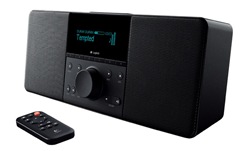
Adding to their Squeezebox line-up, Logitech has recently released their Squeezebox Boom. It uses the same technology as the
Squeezebox Duet, in fact it can be controlled from the same remote and be a part of a system. Not entirely unlike the
Sonos players that also come in a line-out unamplified version and one with a 50W power stage. The Squeezebox Boom just adds a pair of built-in speakers to make it an autonomous unit.
With specs like its sister device, sound quality is only limited to the quality of the amplifier and the miniscule speakers which, incidentally, sound incredibly good for their size. There is a 7-day alarm clock [with a built-in snooze button, no less] and automatic dimming of the display, making this perfect for a bedroom setup.
First impressions are that of a solid device. It is heavy and feels rather rugged in its rubbery front panel covering and shiny cabinet. Buttons operate smoothly and the remote, however small, feels good even in large hands and has quite a good reach. The display may seem old fashioned but the fact is that this type of Nixie-look-a-like display works very well in a dimly lit room, where color LCDs have a tendency to be overly bright. In addition to the ever present Squeezebox controls, the front panel offers 6 preset buttons that can be programmed directly from the device or from a Squeezebox Server using the KidsPlay plugin. Using this plugin gives you an almost unbelievable amount of programming options, such as (but all but limited to) choosing a random mix of tracks of a given genre while showing a brief message on the display as to which genre that is while clearing previous playlist selections. Nice, eh? In fact, it is difficult not to fiddle.
Should you need to, the Squeezebox Boom can be mounted in several positions with an optional L-bracket.
![]()
![]()
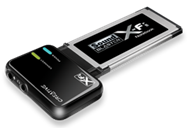 Frankly this gadget was hard to fit into this blog but somehow it needs to be here. It is actually two devices. The X-Fi Notebook is a PCCARD soundcard with built-in wireless transmission using the other part of the equation; the Creative Wireless Receiver.
Frankly this gadget was hard to fit into this blog but somehow it needs to be here. It is actually two devices. The X-Fi Notebook is a PCCARD soundcard with built-in wireless transmission using the other part of the equation; the Creative Wireless Receiver.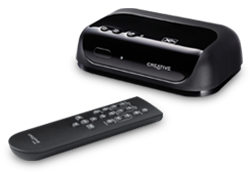 With the receiver it should be possible to transmit music to 4 discrete zones, each equipped with one. In other words: With a decent notebook, an X-Fi Notebook and sufficient receivers, you could build a multi-zone streamer fairly easily. The soundcard itself supports resolutions up to 24bit/48KHz and works pretty much as any other soundcard.
With the receiver it should be possible to transmit music to 4 discrete zones, each equipped with one. In other words: With a decent notebook, an X-Fi Notebook and sufficient receivers, you could build a multi-zone streamer fairly easily. The soundcard itself supports resolutions up to 24bit/48KHz and works pretty much as any other soundcard. Someone at Crestron has nimbly avoided being called narrow minded for quite some time to come, hacking together this truly massive beast of features galore. Okay, it serves media; not just music but video as well. Video from DVD or Blu-ray as well as downloaded rentals. All this in full HD and 7.1 surround sound into 3 zones. Sound is served in a resolution of up to 24bit/96KHz and practically all formats known to man have been squeezed in.
Someone at Crestron has nimbly avoided being called narrow minded for quite some time to come, hacking together this truly massive beast of features galore. Okay, it serves media; not just music but video as well. Video from DVD or Blu-ray as well as downloaded rentals. All this in full HD and 7.1 surround sound into 3 zones. Sound is served in a resolution of up to 24bit/96KHz and practically all formats known to man have been squeezed in. The Cambridge Audio DacMagic has existed for a couple of years but has now had a sort of re-debut at
The Cambridge Audio DacMagic has existed for a couple of years but has now had a sort of re-debut at 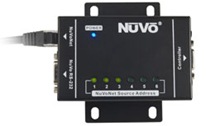 The Nuvo Music port is not an audio device in its own right but an add-on for their large music systems such as NuVo Grand Concerto and NuVo Essentia E6G.
The Nuvo Music port is not an audio device in its own right but an add-on for their large music systems such as NuVo Grand Concerto and NuVo Essentia E6G.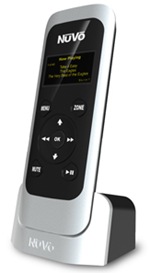 The Music Port is a hardware interface that connects a PC to the system and lets it not only control the NuVo systems but also act as a source. It even lets you collect music from other network places and aggregate them in one playlist. A PC with two 5.1 surround sound cards can then serve 6 streams and truly be a part of a cool setup.
The Music Port is a hardware interface that connects a PC to the system and lets it not only control the NuVo systems but also act as a source. It even lets you collect music from other network places and aggregate them in one playlist. A PC with two 5.1 surround sound cards can then serve 6 streams and truly be a part of a cool setup. Adding to their Squeezebox line-up, Logitech has recently released their Squeezebox Boom. It uses the same technology as the
Adding to their Squeezebox line-up, Logitech has recently released their Squeezebox Boom. It uses the same technology as the 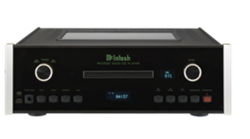 It’s been a year since McIntosh introduced their larger than life [literally] music server
It’s been a year since McIntosh introduced their larger than life [literally] music server 
 The Avoca VIP Music Edition sports some pretty nice specs in a pretty case accompanied by a slightly less pretty PDA based controller. The media center rips CDs to
The Avoca VIP Music Edition sports some pretty nice specs in a pretty case accompanied by a slightly less pretty PDA based controller. The media center rips CDs to 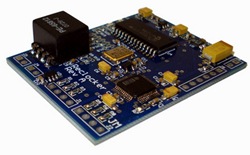 Behind the curious title, lies the modification of the
Behind the curious title, lies the modification of the 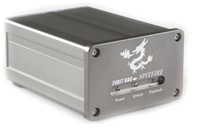 The Firestone Audio line of products is a refreshing attack on the design style of Hi-Fi equipment – not unlike the world of downhill mountain biking [the world is split into four distinct elements: peat, dirt, sight and sound]. Within the scope of this blog, two Firestone Audio products are particularly interesting: The Firestone Audio Fubar II USB DAC and the Firestone Audio Spitfire DAC. The former comes in a choice of bright red or grey and the latter just in grey.
The Firestone Audio line of products is a refreshing attack on the design style of Hi-Fi equipment – not unlike the world of downhill mountain biking [the world is split into four distinct elements: peat, dirt, sight and sound]. Within the scope of this blog, two Firestone Audio products are particularly interesting: The Firestone Audio Fubar II USB DAC and the Firestone Audio Spitfire DAC. The former comes in a choice of bright red or grey and the latter just in grey. The Fubar II is particularly useful as an external sound card for a PC, sporting a direct USB input as well as Toslink and coaxial inputs, all for a 16bit/48KHz conversion. Big brother Spitfire does not have a USB port but does offer a highly relieving bandaid in the form of a maximum resolution of 24bit/96KHz sampling rate. That makes the Spitfire a brilliant part of a chain starting with
The Fubar II is particularly useful as an external sound card for a PC, sporting a direct USB input as well as Toslink and coaxial inputs, all for a 16bit/48KHz conversion. Big brother Spitfire does not have a USB port but does offer a highly relieving bandaid in the form of a maximum resolution of 24bit/96KHz sampling rate. That makes the Spitfire a brilliant part of a chain starting with